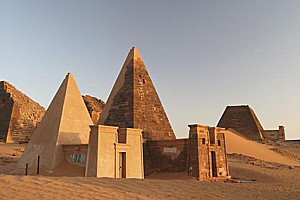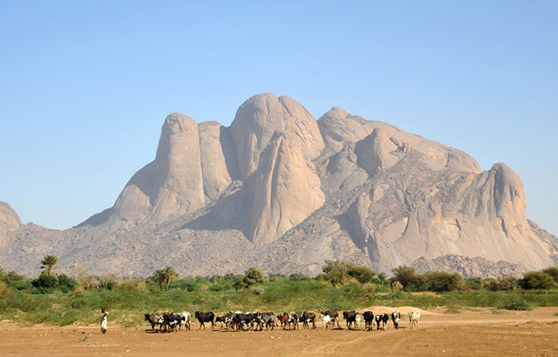Sudan, a Diamond In The Rough – Uncover the Natural Charms of Sudan
Once described as the bread basket of the Arab world, Sudan is a country etched by time and tide; an unknown treat of hidden depth, character, and history.
Bordered by Egypt, the Red Sea, Ethiopia, Eritrea, Kenya, Uganda, the Democratic Republic of Congo, the Central African Republic, Chad, and Libya, Sudan is as geographically rich as it diverse. Within its terrain you can find Napatan pyramids entombing the ancient kings of Kush, one of the world’s largest national parks, Red Sea coastal havens, and savannahs, as well as, rainforests, mountains, and coral reefs.
A Capital of Treasures
Situated at the confluence of the Blue and White Niles, Khartoum has a relatively short history, founded in 1821 as a military outpost. It is said to derive its name from the Arabic word for elephant’s trunk – khurtum – which the thin strip of land between the two rivers resembles. It became the country’s capital in 1834, following a period of rapid growth, and became a popular base for European explorers heading into Africa. Today, together with Omdurman, the old national capital, and Khartoum North, the capital’s industrial area, Khartoum is one of three sister cities, referred to as the “three-towns capital”.

Khartoum’s International Airport lies 4km southeast of the city, and is served by the host of International Airlines.
As a newly developed tourism destination, which has undoubtedly been hindered by a civil war in the south of the country, Sudan has focused its tourism effort on the north, with communications and facilities at their best within Khartoum. Here amid the tree-lined streets – the original design for which were in the shape of the British flag when Kitchener began to rebuild the city in 1898 having ousted the Mahdi – you can visit the National Museum, noted for its antiquities and artefacts dating back to before 4000 BC. The Christian Coptic period from the 8th to the 15th century is also well represented, while the museums gardens contain two reconstructed temples salvaged from the Nubian land flooded by Lake Nasser. Queen Hatshepsut and Pharaoh Tuthmosis III originally built the Egyptian temples respectively.
For those interested in Sudan’s more recent history, the Beit al-Khalifa – the Khalifa House Museum – situated opposite the Mahdi’s tomb in Omdurman, documents the Mahdi’s reign from 1881-1899. Included within this is a selection photographs of Khartoum during this time, and its subsequent occupation by the British. The Mahdi tomb itself (rebuilt in 1947) is closed to foreigners, but can be viewed from the outside.
In addition to its history, Khartoum also celebrates its business and future, with a thriving souq in Omdurman – the largest in Sudan, while two kilometres north is the famed camel market.
A Land of Pyramids
North of Khartoum, along the banks of the Nile can be found several whole fields of pyramids, where the ancient kings of Kush having conquered Egypt around 730 BC, adopted the pharaonic tradition of pyramid tombs. Despite their adherence to Egyptian custom however, these ancient conquerors preferred to be buried not in the land they had won, but near their home, the Kushite capital, Napata, near the modern city of Karima. It is in Karima too, that you can find the remains of one of the most sacred temples in the Nile Valley, the Temple of Amun, built by the pharaohs in the 15th century BC at the base of the Jabal Barkal hill.
 It is interesting to note that while smaller in stature, there are perhaps more pyramids in Sudan than there are in the more widely known Egypt. The reason Sudan’s pyramids have remained in obscurity, unlike those in Egypt, can in part be attributed to the rugged terrain that separates them from the main towns. However, the three pyramid fields of Meroe are a far more accessible day-trip for visitors from Khartoum.
It is interesting to note that while smaller in stature, there are perhaps more pyramids in Sudan than there are in the more widely known Egypt. The reason Sudan’s pyramids have remained in obscurity, unlike those in Egypt, can in part be attributed to the rugged terrain that separates them from the main towns. However, the three pyramid fields of Meroe are a far more accessible day-trip for visitors from Khartoum.
Dating from 300 BC to 350 AD, these fields too show a strong Egyptian architectural influence in burying the royal kings of Meroe. The Sudanese authorities have done much to conserve this site, and reconstruct some of the pyramids to their original state.



